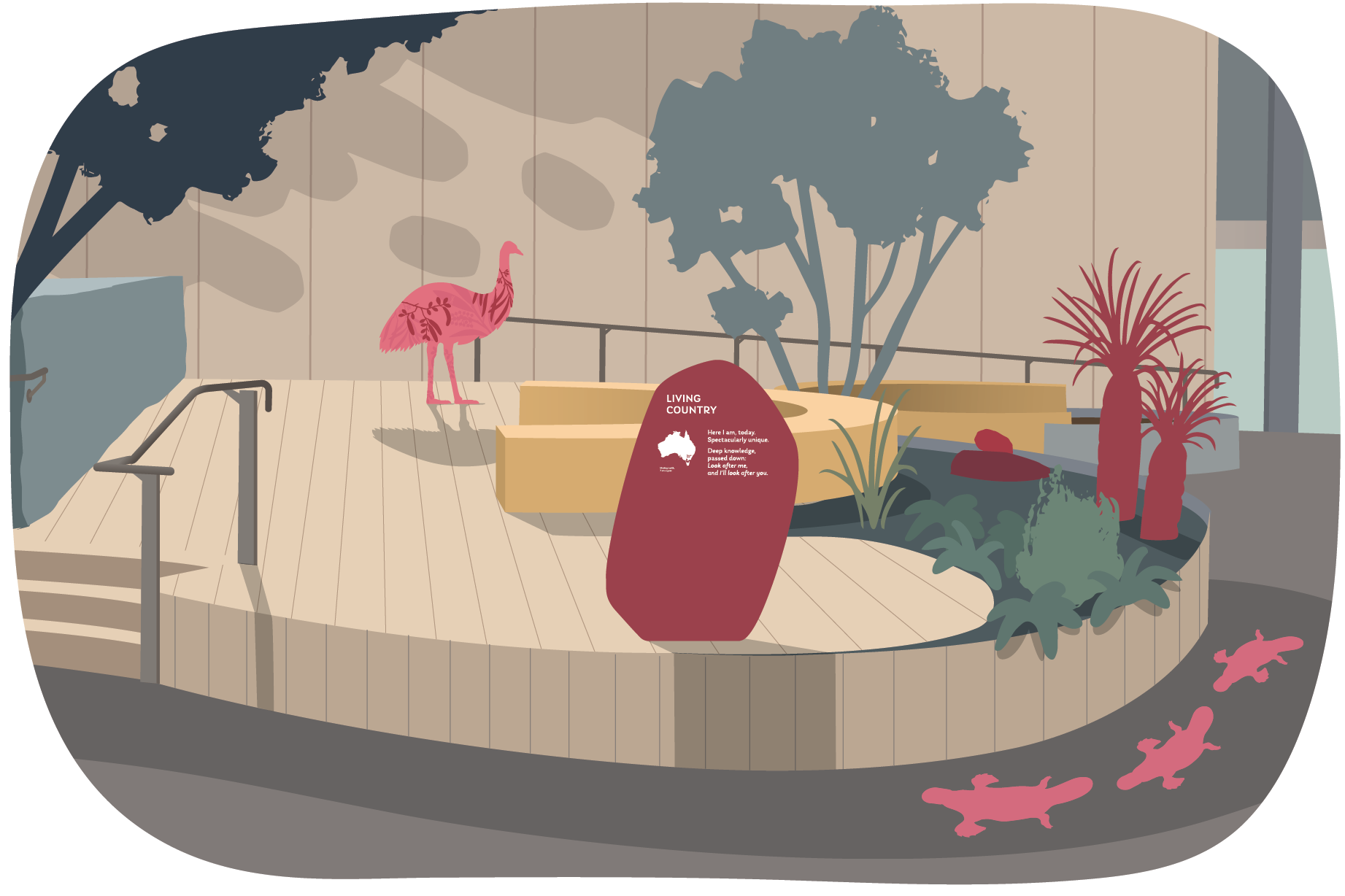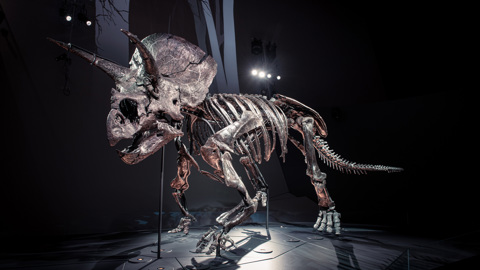Grass Tree
The grass tree (Xanthorrhoea) is a slow growing plant that can take 20 years to flower. Some species can live as long as 600 years!
First Peoples use the plant as a source of food and drink, as well as for making implements and weapons. The plant also secretes a resin that can be used as a glue or sealant. The resin melts when warm but sets hard once cold.
Ratites
Grindstone
Australia's First Peoples have many different uses for grindstones, such as grinding seeds in preparation for cooking. Grindstones can be found throughout country. They are protected by law and must not be removed or disturbed.
Platypus
Look out for the platypus' ancestors as you move through the garden. Known only from fossils of its jawbone, Teinolophos the prehistoric platypus can be found further along the path. But look closely, it's very small!











